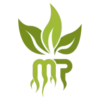Rosemary is native to the Mediterranean region.
Prune rosemary regularly to encourage bushier growth, prevent legginess, and remove any dead or diseased branches. Harvesting sprigs for culinary use also helps maintain the plant's shape.
Harvest rosemary by cutting sprigs as needed. It’s best to cut above a leaf node to encourage new growth.
General Prevention: Maintain good plant hygiene, prune regularly to allow for air circulation, and monitor for pests. Ensure the soil is well-drained to prevent root rot, which can be caused by waterlogged soil.
